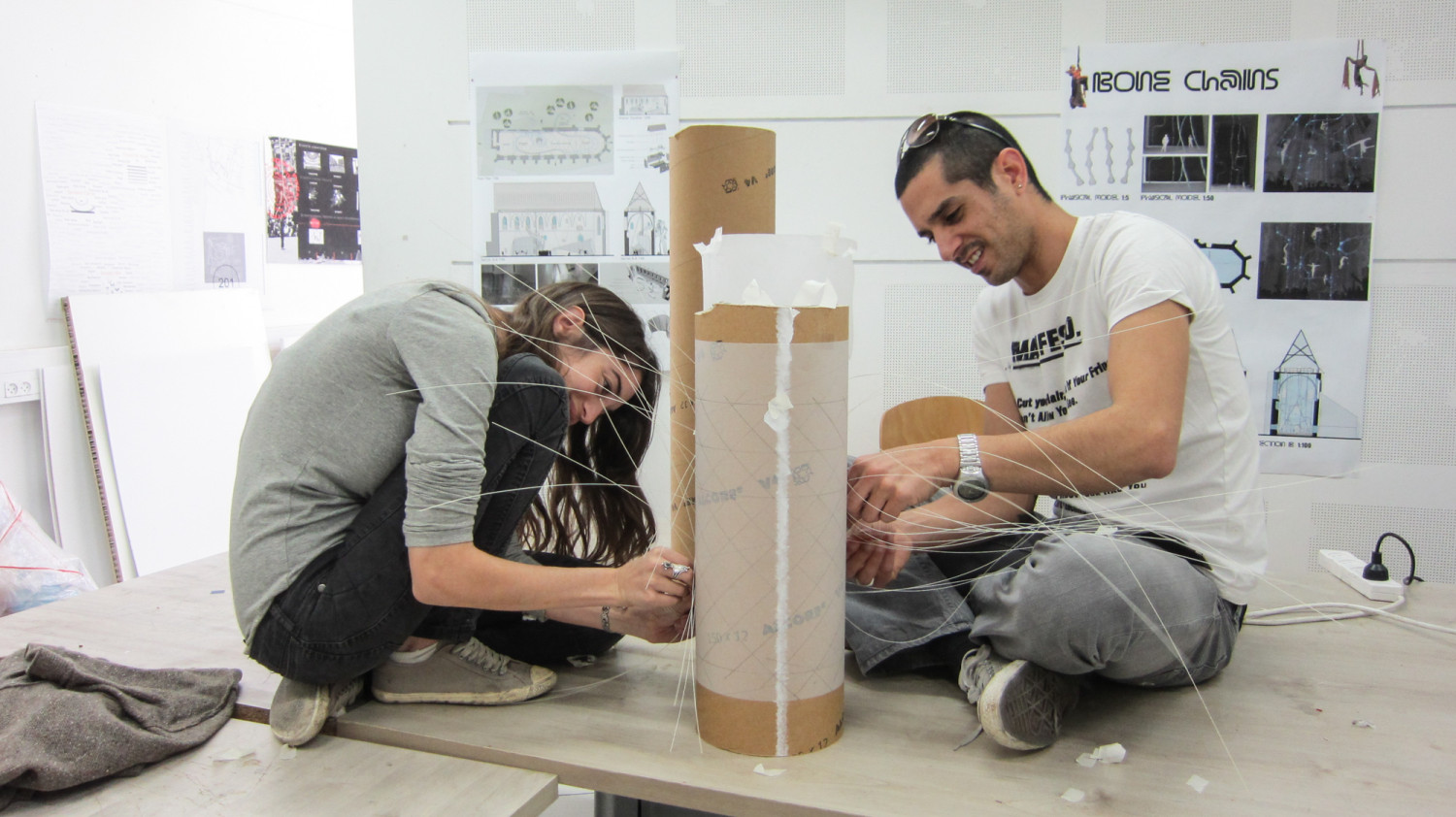The workshop explored the potential of large-scale, self-supporting Archilace structures as a new mode for designers, architects and citizens to intervene with the built environment. The approach recognizes architecture as a process and in a state of constant repair, and builds on the unique ability of textiles to flow, dissect and create configurable, flexible and adaptable environments.
‘Architecture should only provide a framework, in which the inhabitants might construct their homes according to their needs and ideas, free from any paternalism by a master builder.’
Yona Friedman
The workshop combined a parametric design process with a hands-on crafting technique to create an ephemeral, luminous spatial installation designed and fabricated by workshop participants.
Lace-making with composite and smart fibres was introduced as a method to craft space and reflect on the materiality and fabrication processes within the architectural practice. Textile principles from weaving, crossing and twisting fibres to folding, bending and seaming was used as a model for experimental space crafting.
Students parametrically designed continuous surface topologies and membranes using Grasshopper and translated these digital drawings into plans for an Archilace fabrication process. The logic for a patterned, lace circuitry was also incorporated into the parametric modeling.
Weaving composite textile structures allows for virtually any imaginable surface to be created from a small number of parts.
Recently discovered structures that were previously unbuildable can be fabricated by hand using a textile, curvilinear approach – breaking the rectilinear geometry of our built environment with a non-Euclidean geometry made from curved structural elements tangentially joined.
LINKS: Shenkar College of Engineering and Design

Archilace structures as a new mode for designers, architects and citizens to intervene with the built environment